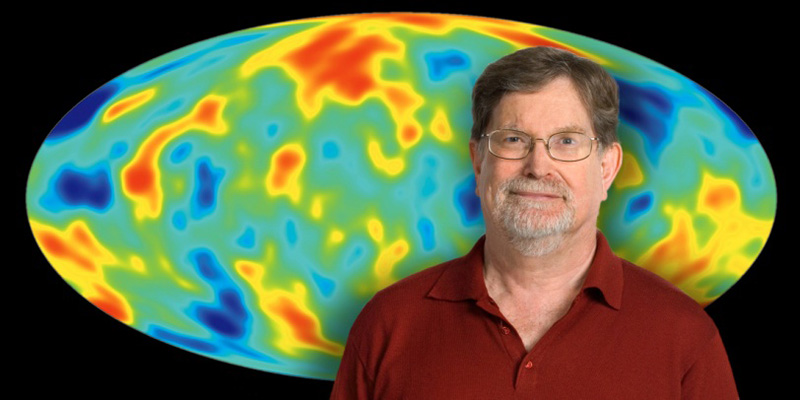Differential Microwave Radiometer and the Cosmic Microwave Background
Photo courtesy by Lawrence Berkeley National Laboratory
Nobel prize-winning physicist George Smoot and the differential microwave radiometer image.
In 1974, George Smoot of Lawrence Berkeley National Laboratory (LBNL) changed research direction by studying the cosmic microwave background by use of a differential microwave radiometer. Smoot became the world authority in the discovery of variations in cosmic microwave background radiation, and later shared the Nobel Prize.
Why it Matters
The origins and nature of the universe have been among the deepest questions asked by philosophers, scientists, and lay people. Powerful theories suggested answers to questions, but limitations to observations made verification and/or distinction between alternative ideas challenging. The development of the differential microwave radiometer was a significant advancement to making astronomical measurements of unprecedented accuracy, opening up the field of observational cosmology.
Methods
The differential microwave radiometer is a thermometer to measure the temperature of cosmic microwave background, the remnant of radiation that has filled the universe since around 300,000 years after the Big Bang. At that time, the universe cooled enough for protons and electrons to form hydrogen atoms, freeing photons from what had been a hot primordial soup of subatomic particles. These energetic photons have since been traveling through space, their wavelength stretched to microwave scale and their frequency reduced to the equivalent of radiation from a black body at 2.73 K.
Rather than measure temperature directly, a radiometer uses a pair of antennae to detect the difference in temperature between two separate parts of the sky. The differential microwave radiometer actually includes three radiometers, each designed to detect a specific wavelength of microwaves. Specific frequencies are targeted for measurement where the signal is strongest from the deepest, ancient reaches of space, rather than from “local” galactic sources.
At the frequencies selected, the cosmic microwave background is more than 1,000 times stronger than the galactic microwave emissions. These observations were made onboard NASA’s COBE satellite launched November 1989 on a Delta rocket that carried three instruments: one compared the spectrum of the cosmic microwave background radiation with a precise blackbody, the differential microwave radiometer mapped the cosmic radiation sensitively, and a diffuse infrared background experiment searched for the cosmic infrared background radiation. Each COBE instrument yielded a major cosmological discovery.
What’s Next
Observational cosmology in general continues to be at the forefront of astrophysics, with further studies conducted not only on the cosmic microwave background back other cosmological phenomena such as dark matter and dark energy. Experiments are currently performed for studying dark energy using weak gravitational lensing, a theoretical possibility predicted by general relativity, and now becoming accessible to measurement.
Publications
Smoot GF et al (27 co-authors). 1992. “Structure in the COBE Differential Microwave Radiometer First-Year Maps.” The Astrophysical Journal 396: L1-L5. September.
Smoot GF. 1991 and 1992. “The Infrared and Submillimetre Sky after COBE.” Proceedings of the NATO Adanced Study Institute, Les Houches, France, March 20-30, 1991 (A93-51701 22-90), p. 331-344.00/1992.


